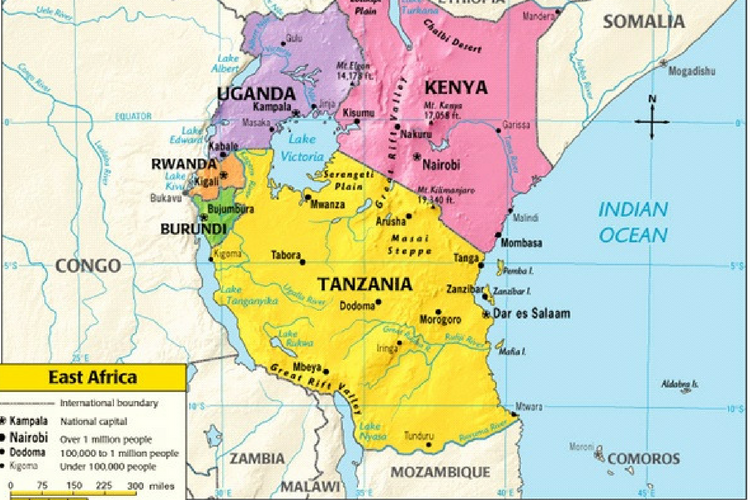
Economic Cooperation in East Africa After Independence (1961-1983)
Economic cooperation between countries in East Africa began with a customs union between Kenya and Uganda in 1917, which the then Tanganyika joined in 1927. This was followed by the East African High Commission from 1948 to 1961, the East African Common Services Organization from 1961 to 1967.
Between December 1961 and December 1963, Tanganyika, Uganda, Kenya and Zanzibar achieved independence from Britain. However, their dependency on Britain politically and economically continued and in some cases increased. The lack of trained manpower to staff high level technical and administrative positions kept the former colonies dependent on Britain for skilled manpower. The education system at the time was not sufficient for the skills required. They introduced crash training programs and expanded secondary and University education. Governments sent many students abroad especially to the United States so they could receive additional education and skills training.
Kenya, Uganda and Tanzania inherited a capitalist economic structure dominated by Europeans so they tried to break their dependence on Britain by diversifying markets and export crops. The governments encouraged local industry to reduce imports and they received development aid from the United States, Russia and China instead of Britain. Over time the countries focused their economies on agriculture and tourism and industry was made of a lot of multinationals. Their dependence on Britain decreased but foreign dependence was still an issue in East Africa.
After Independence, farmers in Kenya sold their farms to Britain and left the country. Britain also offered citizenship to Asians who were anxious about living in the region after Independence.
EAST AFRICAN COMMON SERVICES ORGANIZATION
In 1961, the East African states created an organization that would promote free trade in East Africa and provide the common services previously performed by the East African High Commission. However, the cooperation stalled because of Obote’s reluctance and Kenya continued to dominate the economy in the region. Kenya had the most manufacturing industries and exported more goods to the other countries.
THE KAMPALA AGREEMENT (1964)
A new agreement was drafted in 1964 because Kenya continued to dominate trade in the region. The agreement created a quota system in interterritorial trade to address the imbalances that favored Kenya. There continued to be disagreements and the countries decided to abandon a common currency.
TREATY FOR EAST AFRICAN COOPERATION (1967)
The Common Services Organization was replaced by the East African Community which was headquartered in Arusha, Tanzania. They maintained the common market and services and discussed more equitable distribution of benefits between countries. One provision allowed Uganda and Tanzania to tax certain goods produced in Kenya in order to protect their own industries. They agreement led to the creation of the East African Development Bank and more services and investments were made in Uganda and Tanzania. Some corporations, for example, harbors moved to Tanzania and posts and telegraphs moved to Uganda. However, different ideologies and execution made it difficult to enforce the agreements. In addition, Kenya’s industries continued to expand and they exported more goods to Uganda and Tanzania which created more trade imbalances and they felt Kenya was prospering at their expense.
The problems with the agreement were exacerbated by the overthrow of President Obote by Idi Amin in Uganda. Tanzania’s President Nyerere refused to acknowledge Amin as the new leader. In early 1977, the community collapsed and each country took control over its own services like airlines and railways. The relationships between countries were strained with Tanzania even closing its border with Kenya. In 1983, the countries finally reached an agreement on how they would divide the community assets but the economic cooperation.
The organization was founded originally in 1967, collapsed in 1977, and revived on 7 July 2000. Today the partner states include Kenya, Tanzania, Uganda, Burundi, Rwanda and South Sudan.



